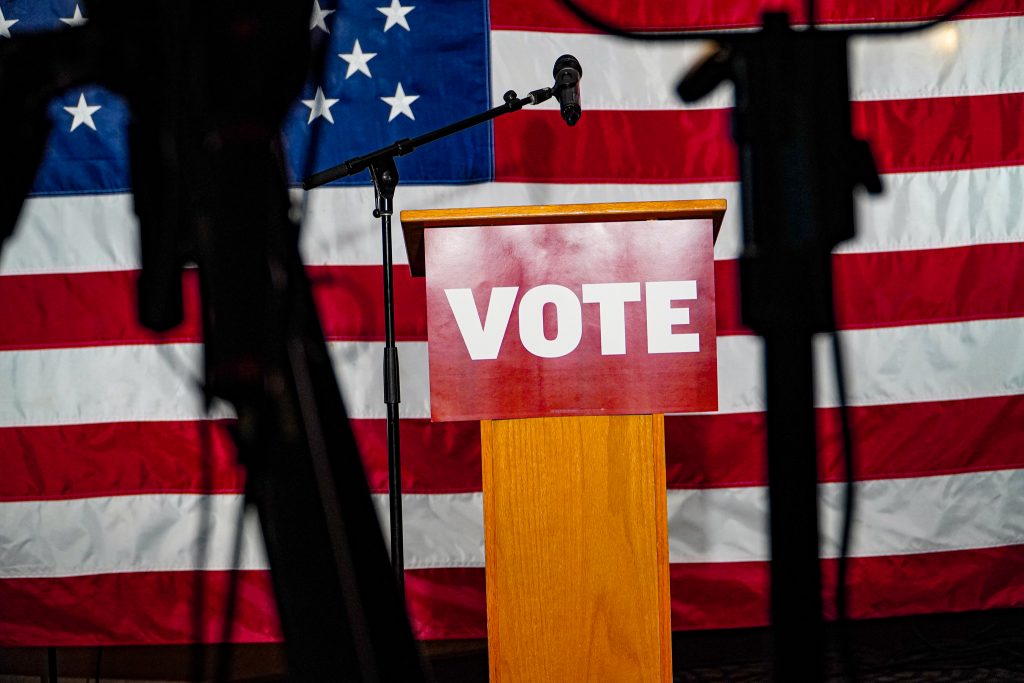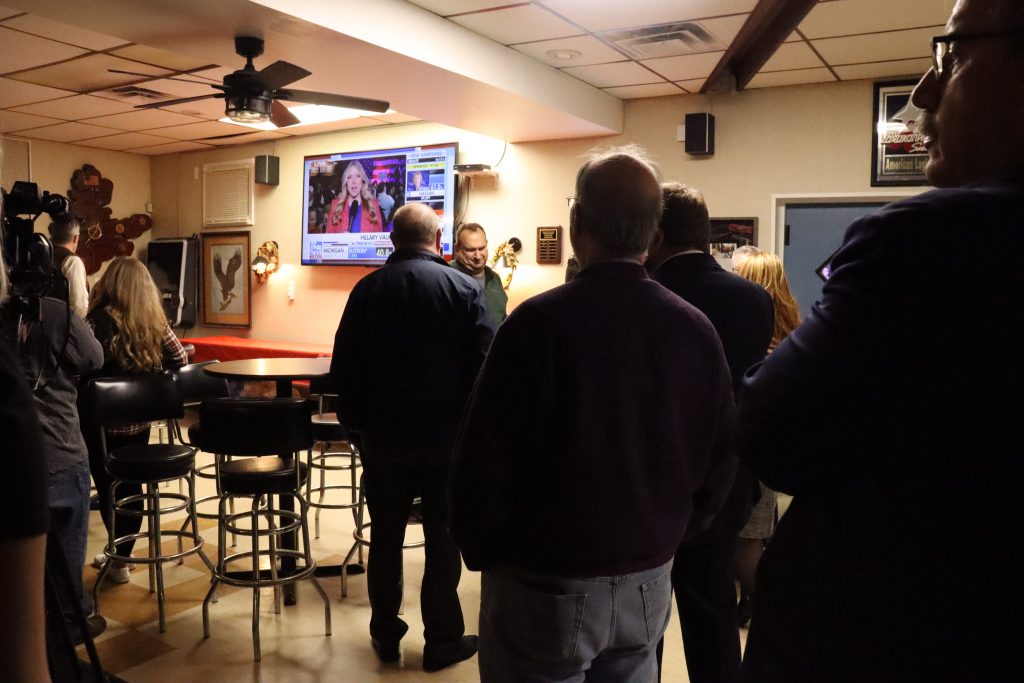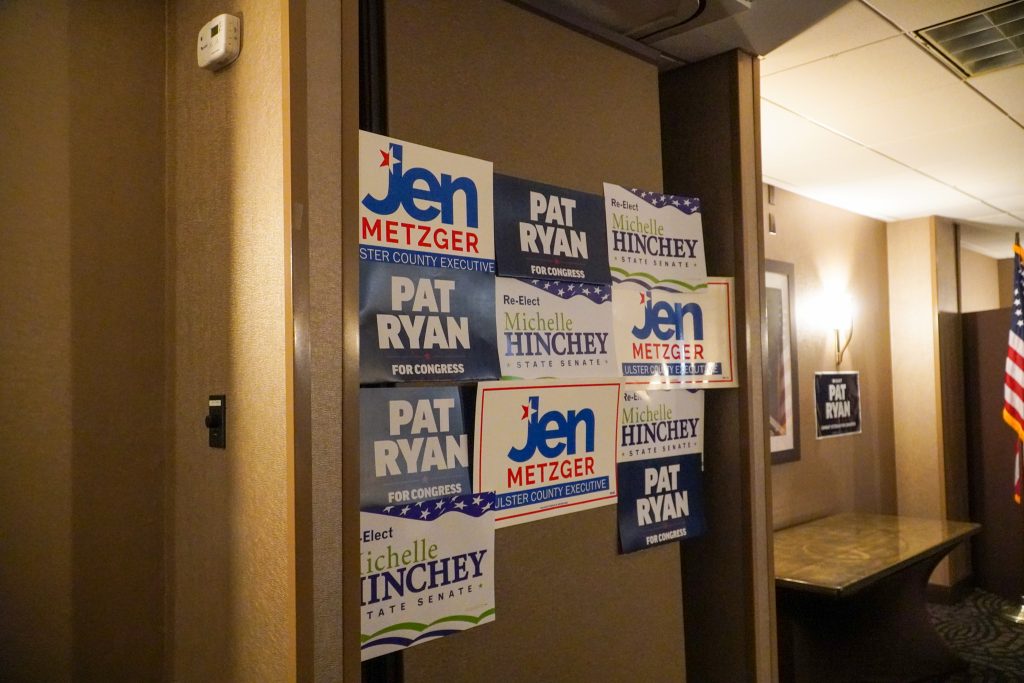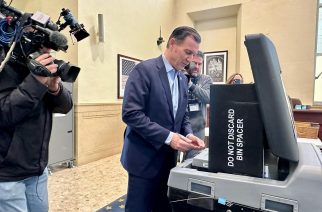
New York proved to be a battleground state in this year’s midterm elections. The state saw a conservative shift in traditionally blue districts in the Hudson Valley and elsewhere, with an incongruity between statewide and congressional elections. A week after midterm results are in, pundits and political experts are examining results.
Blair Horner, executive director of New York Public Interest Research Group, said, “Democrats have a suburbs problem and Republicans have a Trump problem.”
This analysis cuts both ways. Republican Assemblyman Mike Lawler — labeled by Democrats in the leadup to the election as “Maga Mike” — ousted an established member of the Democratic party on Tuesday night. Sean Patrick Maloney, a five-term congressman, was not an incumbent in the district but was well entrenched politically, put in charge of congressional campaigns for democratic members of the house.
Trump comes into play when considering how Colin Schmitt’s night went. The New Windsor Republican assemblyman, without making an outright statement, has courted voters who likely support the former president.
For example, in response to the FBI raid on the Trump owned Mar-a-Lago Hotel, Schmitt said, “The unprecedented raid of President Trump’s residence has raised significant questions about the politicization of the FBI that must be fully and transparently answered by the Department of Justice.”
Speaking to voters at his election party in New Windsor’s American Legion post it appeared for some people it was statements like that, coupled with his legislative choices that garnered their votes.
Mark Freitas, 55, a pharmacist in Washingtonville, Orange County, explained that he voted for Schmitt because he helped small business owners like himself while in the state Assembly. “He helped us with the drug companies and has the same values and policies as me,” Freitas said.
Schmitt ultimately lost his race, but he carried Orange County by nearly 10,000 votes, getting 52.64 percent of the vote to Pat Ryan’s 44.57 percent. The race itself was the closest in the Hudson Valley with Schmitt conceding early Wednesday behind just 2,000 votes.

Surveying the political landscape over the last few months, the most palpable issues facing voters were inflation, reproductive rights, crime and democracy itself. As summer became fall, Democratic candidates found themselves transitioning from rhetoric reinforcing their belief in a woman’s right to choose to emphasizing their dedication to reducing inflation and improving public safety, topics that Republicans used to attack Democratic candidates in several campaigns.
Rep. Maloney for example, started his campaign emphasizing his legislative history protecting reproductive rights and ended it with rallies for gun safety and meetings with law enforcement officials. Josh Riley, D-Ithaca, comes from a law enforcement family and spent months attempting to disprove ads that capitalized on an out of context quote, “criminals deserve help not handcuffs,” made a town hall. Riley ultimately lost in NY-19 to Marcus Molinaro, R-Red Hook, only making real gains in progressive Tompkins County, home to Ithaca College and Cornell University.
According to Martin Shaffer, dean of the School of Liberal Arts at Marist College and an expert on Congress and state and local politics, the Hudson Valley will continue to be the setting for toss-ups in the future. “All three races were extremely close, and I think that is an indication that the valley is continuing to be a purple valley in terms of [being] fairly evenly divided between Democrats and Republicans. I suspect that those seats are going to continue to be well contested,” Shaffer said.
Shaffer noted that Pat Ryan won in Duchess County Tuesday night, even as Zeldin carried it over Hochul. In each case, these wins in Dutchess County were by four percentage points or less.
Across the river, in Ulster County, Ryan fared a bit better, which likely can be credited to voter turnout. Of the 33,153 active Democrats registered in Ulster, as a part of the 18th District, he received 23,885 of their votes.
“As far as I can tell, within Ulster County, Dems and independents were concerned with all of the races on the ballot. And, I would just like to say that I know how hard all of those candidates were working each day leading up tot the elections to mobilize constituents, in many cases new constituents, to get out and vote,” said Megan Sperry, Ulster County legislator for District 17.

After court ordered redistricting, the new lines gave Democrats less advantageous positioning in congressional races this election. The result is that after flipped seats across the state, New York Democrats will send four less congressmen to Washington D.C. in January.
Perhaps recognizing this, partisan fundraising outfits from outside the state dramatically increased the amount spent in Hudson Valley house races this year. Maloney received $9 million this year in outside spending, according to Open Secrets, compared to Lawler’s $4 million. This compared to the near $600,000 spent on both parties’ candidates in 2020. Heading north in the region this became a trend.
In 2020 the candidates for NY-18 saw $8,427 in outside spending for their campaigns. Ryan and Schmitt’s race involved over $12.5 million in outside spending in their toss-up district. The race in NY-19 between Molinaro and Riley saw over $13 million in outside spending compared to $13,576 in 2020.
Unsurprisingly, given the high stakes for both parties in Congress during this election, a great deal of this money came from congressional backed political action committees. In District 19 for example, $5.2 million came from the Republican backed Congressional Leadership Fund and $5.6 million came from Democrat backed PACs The Democratic Congressional Campaign Committee and The House Majority PAC.
Factoring in the results in Long Island, Democrats will send four less representatives to the next Congress.









